Making the Most of a Small Space: 9 Tips for Condo Living in Toronto
Living in a condo in Toronto offers a unique lifestyle, where you can enjoy plenty of urban conveniences together with breathtaking city views, a strong sense of community, and modern amenities right at your doorstep. With space often at a premium, many people in Toronto are also embracing the benefits of compact living – learning to maximize every square foot with smart storage solutions, multi-functional furniture, and thoughtful design that enhances both comfort and functionality.
As many Torontonians know, creating a functional and stylish home requires thoughtful planning. On today’s blog, we’re sharing some practical tips to maximize your condo space and enhance your living experience.

1. Make Use of Lighting
Lighting plays a big role in how a space feels. Bright, well-lit rooms come across as open and welcoming. Let in natural light by using sheer curtains or keeping window coverings simple. Add lamps, overhead lights, or LED strips to brighten darker areas. Choose light bulbs with a daylight effect for a fresh, airy vibe.

2. Utilize Mirrors
Mirrors are great for making small spaces feel bigger. They reflect light and add depth, making rooms look larger. Try placing a big mirror across from a window to boost natural light, or use mirrored furniture to keep things functional without adding clutter.
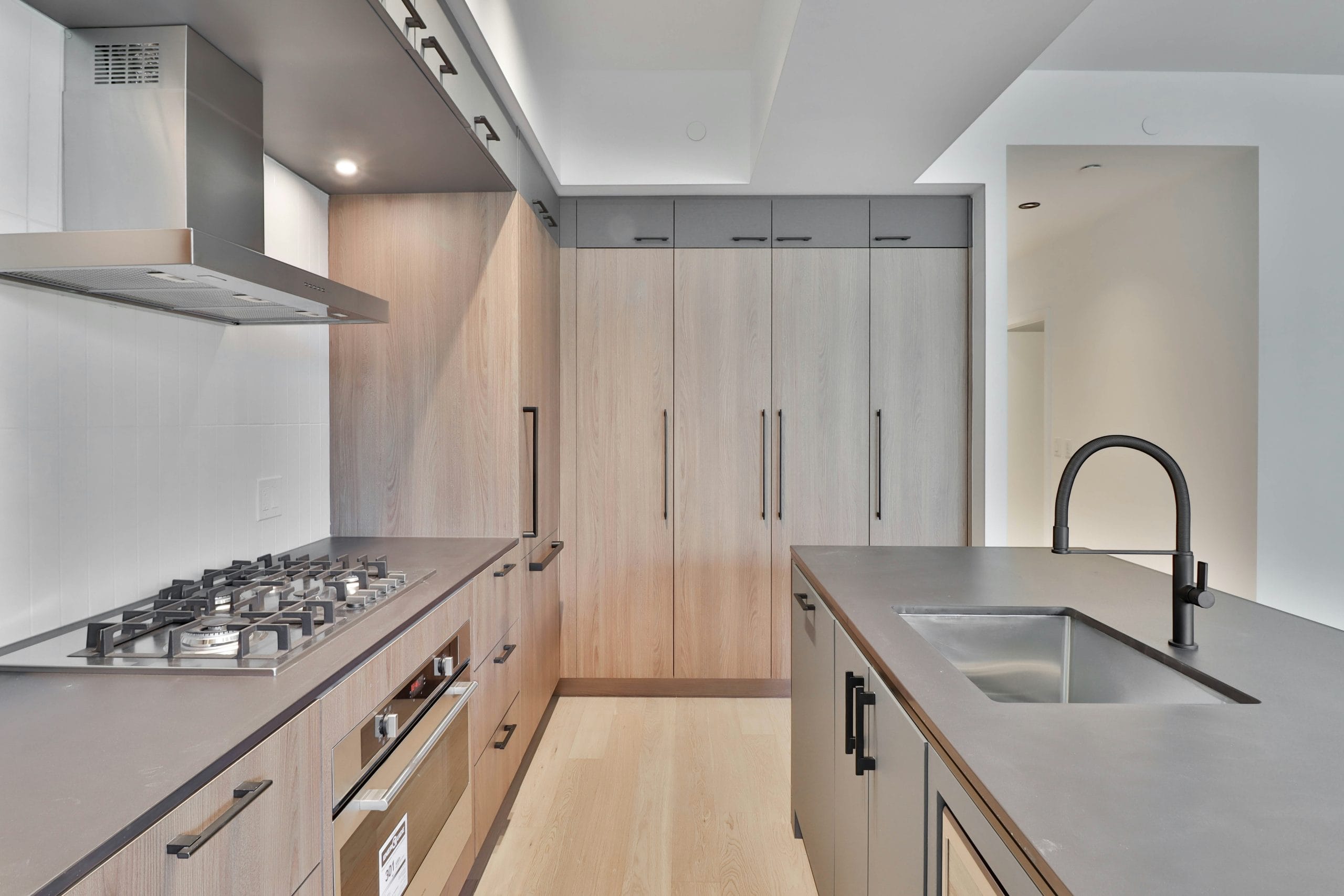
3. Think Vertically
In small spaces, think vertical. Use walls for shelves, storage, and decor. Try tall bookcases, floating shelves, or wall-mounted cabinets to keep things tidy and off the floor. A vertical garden is also a great way to add greenery without using up floor space.

4. Designate Zones
In open-concept condos, creating separate zones can make the space more practical. Use rugs, furniture placement, or dividers to define areas for dining, relaxing, or working. For example, a sofa can separate the living room from the dining area, and a folding screen can add privacy to a home office.

5. Invest in Multi-Functional Furniture
Multi-purpose furniture is a must for small spaces. Think sofa beds, extendable dining tables, or storage ottomans. Wall-mounted desks and fold-away pieces add function without taking up space, letting you adjust the layout as needed.

6. Take Advantage of Condo Amenities
A great perk of condo living is the shared amenities. Use co-working spaces for working from home or party rooms and lounges for socializing without crowding your unit. Fitness centres and recreational facilities save you from needing bulky workout gear at home.
7. Prioritize Quality Over Quantity
Too much furniture can make a small condo feel cramped. Stick to high-quality, durable pieces that fit your needs and style. Well-made furniture lasts longer and adds a touch of sophistication to your space.

8. Embrace Smart Storage Solutions
Good storage is key to keeping your space tidy. Try built-in units, under-bed drawers, or storage ottomans to make the most of your space. Use baskets and bins to organize and hide items, and de-clutter often to keep only what’s essential and meaningful.

9. Consider Open Plans
Open-plan designs can make a small condo feel bigger. Removing extra walls or choosing a unit with an open-concept floor plan provides a smooth flow and a more open feel. Keep things organized by arranging furniture and decor to match each area’s purpose.
Making the most of a small Toronto condo is about smart design and thoughtful choices. Use lighting, mirrors, vertical storage, and multi-functional furniture to create a space that’s both practical and stylish. Take advantage of condo amenities and choose quality over quantity to elevate your lifestyle. With de-cluttering and clever storage, you can keep your home organized and your lifestyle stress-free. Whether you’re a first-time condo owner or refreshing your space, these tips will help you make the most of city living.
Do you have any tips for making a small space look bigger? Connect with BAZIS on social media (Facebook, X, or Instagram) and let us know!
2024 Construction Trends in Pre-Construction Condos in Toronto

Toronto’s real estate landscape is ever-evolving, with pre-construction condos becoming an increasingly popular investment and home buying choice. In 2024, it’s crucial that we understand the trends shaping their development within Toronto. In this blog, we’ll explore key construction trends that are expected to continue to shape pre-construction condos within Toronto’s real estate market.

Green Buildings, Smart Technology, Luxurious Amenities
The sustainable and green construction practices within the real estate industry continue into 2024 (read more about this in our “The Future of Pre-Construction in Toronto: Trends and Predictions” blog post from May 2023). Pre-construction condos frequently prioritize energy efficiency, green building materials, and sustainable design elements such as solar panels, energy-efficient appliances, and green roofs as ways of appealing to eco-conscious buyers.
Buyers are also increasingly looking for properties that offer smart technology features such as automated lighting, climate control, security systems, and voice-activated assistants, and developers are responding by including these technologies in their condo designs to provide residents with a seamless living experience. Read more about smart home technology in our blog post “Exploring the Top 2024 Interior Design Trends for Condos.”
Additionally, buyers can expect more lavish amenities such as rooftop gardens, fitness centres, swimming pools, concierge services, and co-working spaces in 2024 condos. This will enhance overall living experiences and attract discerning buyers who value premium lifestyle features.

Image: Strata
Unique Architectural Designs
Architectural design plays an essential role in ensuring the success of pre-construction condo projects, and this year we’re continuing to see innovative and eye-catching designs that set new standards for urban living in Toronto. We can expect to continue witnessing towers featuring modernist features alongside mixed-use developments with residential, retail, and commercial spaces. Developers are pushing boundaries to create iconic structures that transform Toronto’s skyline.
Focus on Health and Wellness
Pre-construction condo developers are placing increased importance on creating living environments that support well-being. Fitness centres, yoga studios, meditation rooms, green spaces, and other features and amenities that help to create healthy living environments will become one of the key selling points of new condo developments in Toronto.
Adaptability and Flexibility in Design
Flexibility has become increasingly important when designing pre-construction condos, as buyers look for spaces that adapt to their changing lifestyles and needs. Looking ahead, we can expect more multifunctional floor plans featuring options for customization as well as multifunctional spaces. Developers are creating layouts that maximize space efficiency while giving residents the ability to personalize their living spaces.

Virtual and Augmented Realities
As technology progresses, its integration into real estate transactions becomes more prevalent. In 2024, buyers should expect virtual property tours, interactive floor plans, and digital staging tools that provide realistic previews of pre-construction condos. This technology not only enhances buyers’ buying experiences but also allows them to visualize their future home in a more immersive fashion.
Conclusion
Construction trends shaping pre-construction condos in Toronto for 2024 reflect an innovative real estate market that continues to adjust and adapt to the ever-evolving needs and preferences of buyers. Sustainable green buildings, smart home technology, luxurious amenities, and adaptable designs are being adopted by developers in order to craft exceptional living spaces for residents. Looking toward the future, Toronto’s pre-construction condo market will continue its flourishing presence with buyers having access to options tailored specifically toward their lifestyles and preferences.
What construction trends in Toronto’s pre-construction condo market are you most excited to see? Connect with BAZIS on social media (Facebook, X, or Instagram) and let us know!
Spring into Style: 7 Quick Interior Design Updates for a Fresh Home

Spring is here, bringing with it a fresh opportunity to breathe new life into our living spaces. As we bid farewell to the winter chill and welcome the warmth, it’s the perfect time to consider some quick interior design updates to rejuvenate our homes. From simple tweaks to more substantial changes, here are some ideas to help you welcome spring into your home.

Refresh Your Furniture
One of the easiest ways to update your condo for spring is by giving your furniture a makeover. Consider refurbishing old pieces with a fresh coat of paint or new upholstery. A worn-out chair can become a focal point with a vibrant new fabric, and a tired cabinet can transform with a coat of bright paint. For those looking for a bigger change, spring is also an excellent time to invest in new furniture pieces that reflect the season’s light and airy vibes.

Light Up Your Space
Good lighting can completely transform the ambiance of a room. If your lighting fixtures are looking outdated, consider swapping them out for new, modern options. Pendant lights, chandeliers, and stylish floor lamps can instantly elevate the mood of any space. Opt for fixtures with warm tones to create a cozy atmosphere, or choose sleek, minimalist designs for a contemporary look.

Try a Fresh Coat of Paint
Before the heat of summer arrives, take advantage of the mild spring weather to give your walls a fresh coat of paint. Light, pastel hues such as soft blues, pale greens, or gentle yellows can brighten up a room and create a sense of freshness. Whether you paint an entire room or just an accent wall, this simple update can make a world of difference in how your space feels.

Bring Nature Indoors
Embrace the spirit of spring by bringing a touch of nature indoors. Fresh-cut blooms from a local flower shop can add instant charm and a pop of colour to any room. If you have a green thumb, consider adding houseplants to your décor. Not only do plants purify the air, but they also bring a sense of vitality and tranquility to your space.

Switch Up Accent Pieces
For a quick and budget-friendly update, swap out your accent pieces for ones that reflect the season. Change out your throw pillows and blankets for lighter fabrics and cheerful patterns. Update your vases with seasonal flowers or branches for a natural touch. Consider rotating your artwork or adding a new piece to create a focal point in a room. A new area rug can also redefine the entire look and feel of a space.

Infuse Bright Colours
Spring is all about embracing colour, so don’t be afraid to incorporate bold and bright hues into your décor. Whether it’s a vibrant yellow throw, a lavender accent chair, or a turquoise vase, adding pops of colour can instantly energize a room. If you prefer a more subtle approach, consider incorporating pastel shades for a softer, springtime feel.

Do Some Spring Cleaning and Organization
Last but certainly not least, don’t forget the power of spring cleaning and organization. Sometimes, simply de-cluttering and reorganizing your space can make it feel brand new, and springtime is the perfect season for this type of home refresh. Invest in stylish storage solutions such as baskets, bins, or decorative boxes to keep clutter at bay. Clear out any unnecessary items by selling or donating them, rearrange furniture for better flow, and give your space a thorough cleaning to welcome the season with a fresh start.
How are you embracing spring in your interior design? Connect with BAZIS on social media (Facebook, X, or Instagram) and let us know!
Exploring the Top 2024 Interior Design Trends for Condos

As we enter 2024, interior design trends continue to evolve, with a strong focus on sustainability and striking the perfect balance between aesthetics and functionality. In this blog post, we’ll explore the top trends for condos in 2024, including sustainable living, smart home technology, the beauty of curves, the colours that will define the year, the allure of mixed metals, and more!

Biophilic Design and Sustainable Living
In 2024, biophilic design continues to thrive, bringing natural elements into interior spaces. Incorporating indoor plants, natural materials, and maximizing natural light creates a calming environment within condos. You can hang plants or showcase vertical gardens, incorporate stone, wood, or rattan for warmth and texture, and utilize large windows and mirrors to maximize natural light. Sustainability remains crucial in design, with a focus on eco-friendly materials like reclaimed wood, recycled glass, and low-VOC paints in condos. Choose furniture made from renewable resources for practicality and style, and incorporate textiles made of organic cotton or linen for a luxurious touch.

Smart Home Technology
In 2024, smart technology integration in condos will become a staple in interior design. Smart home features extend to lighting, heating, security systems, and even smart furniture. Voice-activated lighting controls and furniture with built-in charging docks are examples of how technology seamlessly blends into our living spaces, enhancing convenience and comfort.
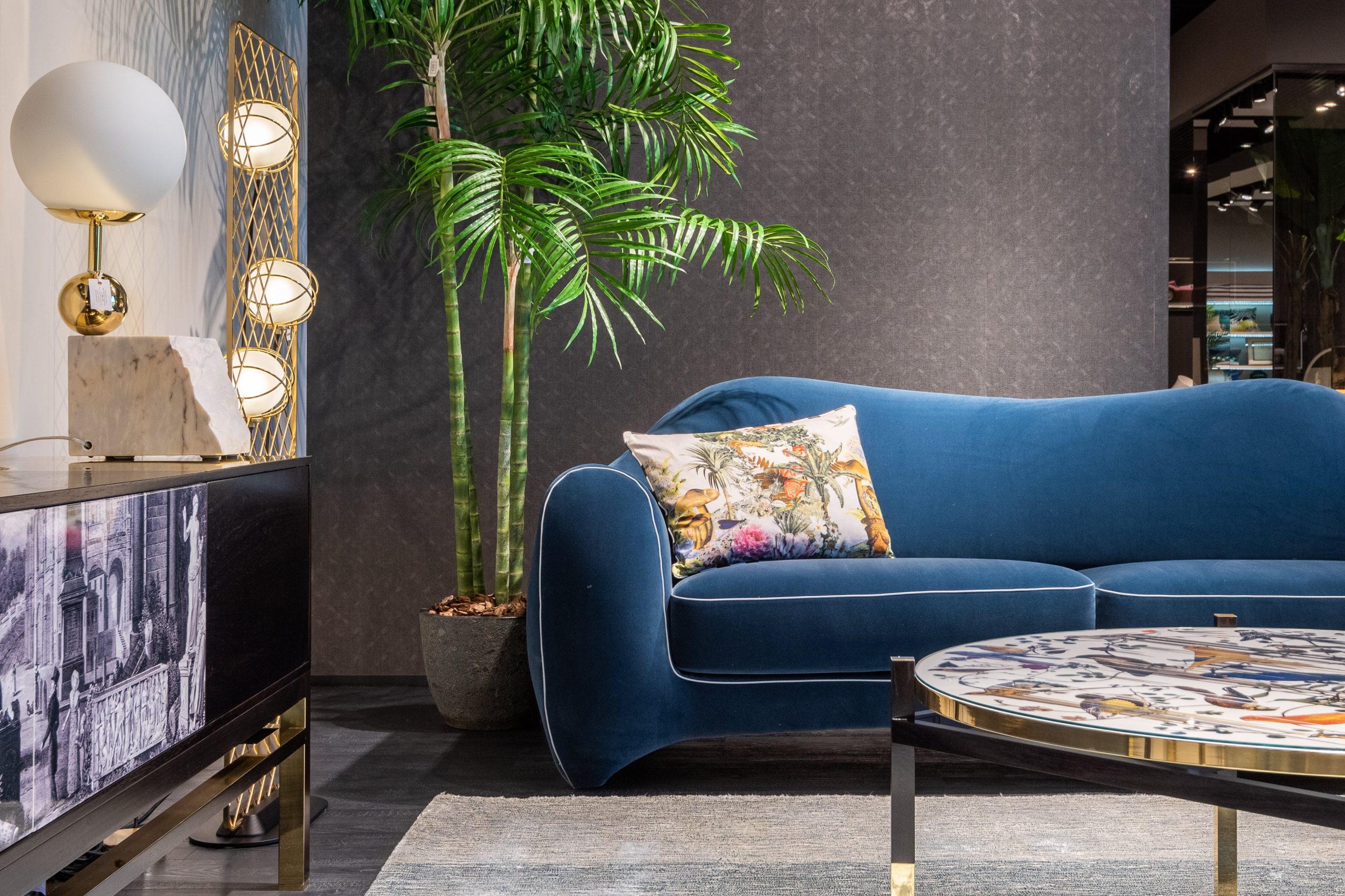
Curved Furniture
In 2024, interior design continues to embrace the beauty of curves and organic shapes, creating softer and more inviting spaces. Designers are opting for curved furniture such as sectional sofas and rounded coffee tables. Arched doorways and windows are also gaining popularity, offering a seamless flow and a touch of sophistication. Incorporating curved furniture and organic shapes creates a modern and comfortable ambiance, adding a refreshing and inviting feel to your condo. Consider adding curved sofas, rounded coffee tables, circular rugs, or oval mirrors to achieve this inviting aesthetic.
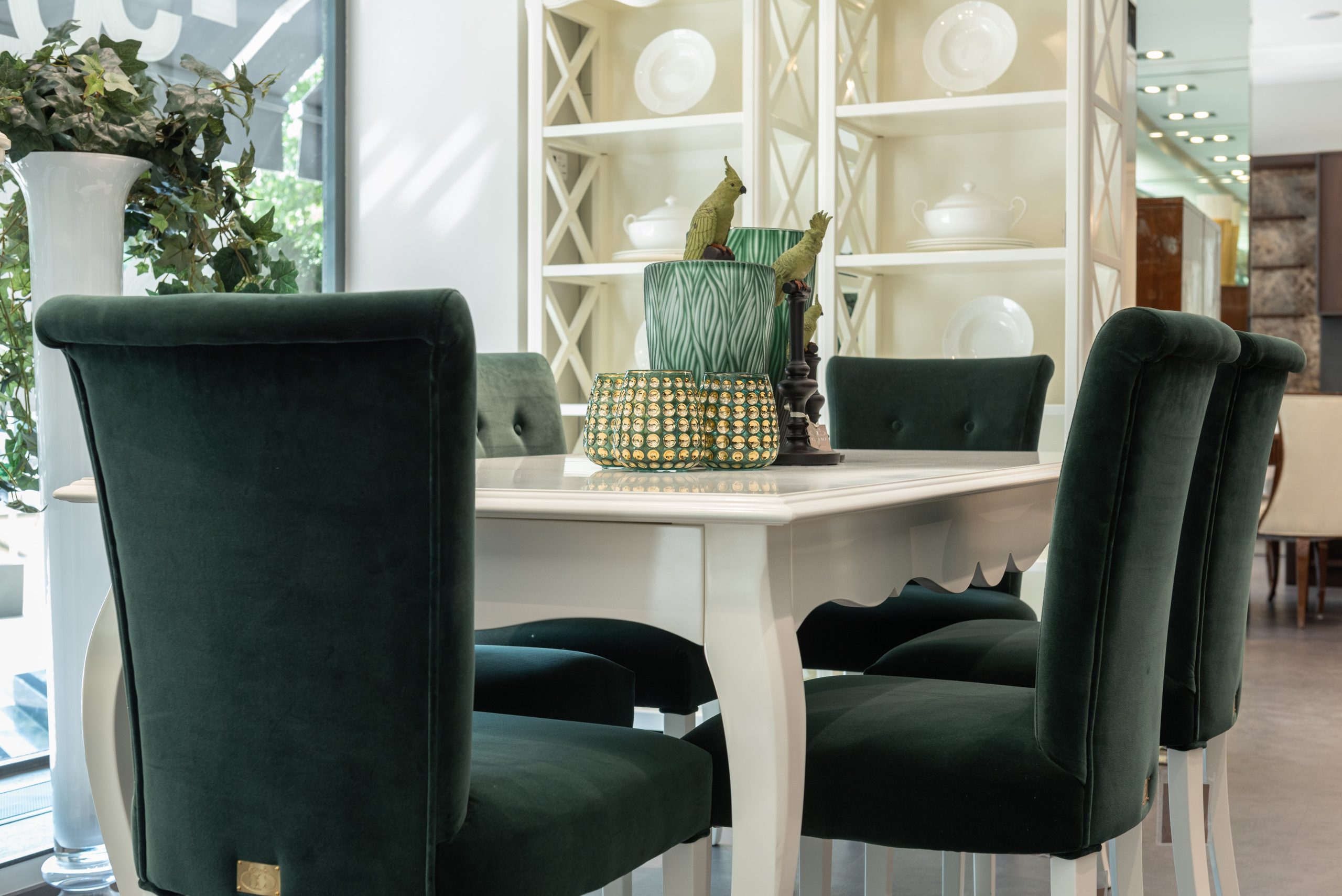
Colours of the Year
Pantone’s “Peach Fuzz” and Benjamin Moore’s “Blue Nova” are 2024’s stand-out colours, bringing warmth and tranquility to any room. Deep greens, purples, and earthy tones will also dominate interior design, replacing neutral tones. To create a cozy and inviting ambiance, consider incorporating tones of terracotta, ochre, warm greys, and natural greens into your walls, furniture, and accessories.
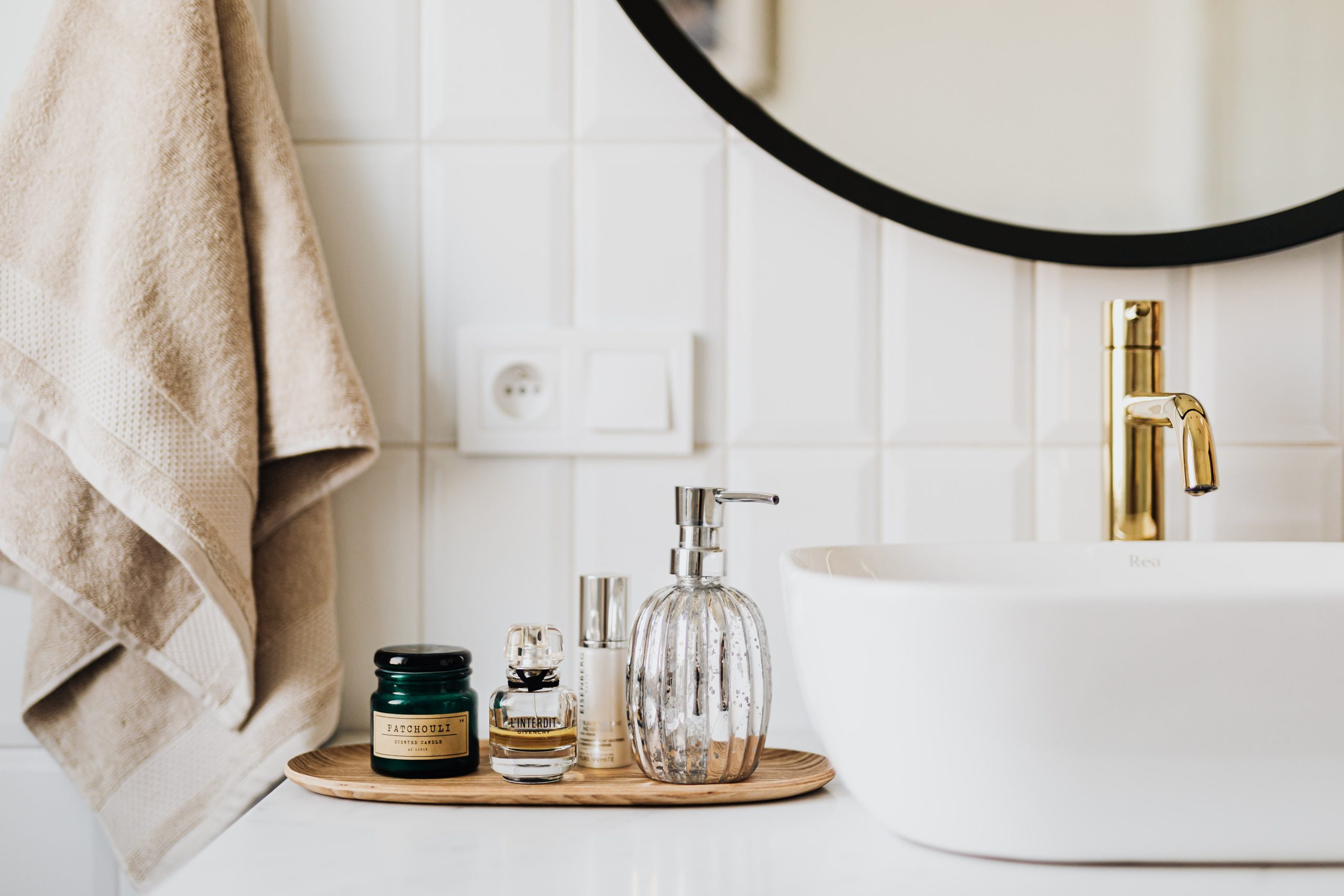
Mixed Metals
In 2024, the art of contrast is embraced with the use of mixed metals. While chrome takes centre stage, designers are exploring combinations of metals like copper, bronze, and nickel. Incorporating mixed metals through hardware, light fixtures, and decorative pieces adds visual interest and sophistication. The versatility of mixed metals allows you to create unique and personalized spaces, whether you’re aiming for a sleek contemporary look or a rustic eclectic style.

Statement Floors and Artwork
In 2024, make a bold statement with your flooring choices. Herringbone patterns and geometric designs provide charming and eye-catching alternatives to traditional floors. Get creative with flooring materials like patterned tiles, luxurious vinyl, or reclaimed hardwood to add personality to your space. Enhance your statement floors with captivating artwork, large-scale paintings, and bold sculptures that create focal points and express your unique style. The combination of statement floors and artwork will elevate your interior design, transforming your space into a vibrant and engaging environment.
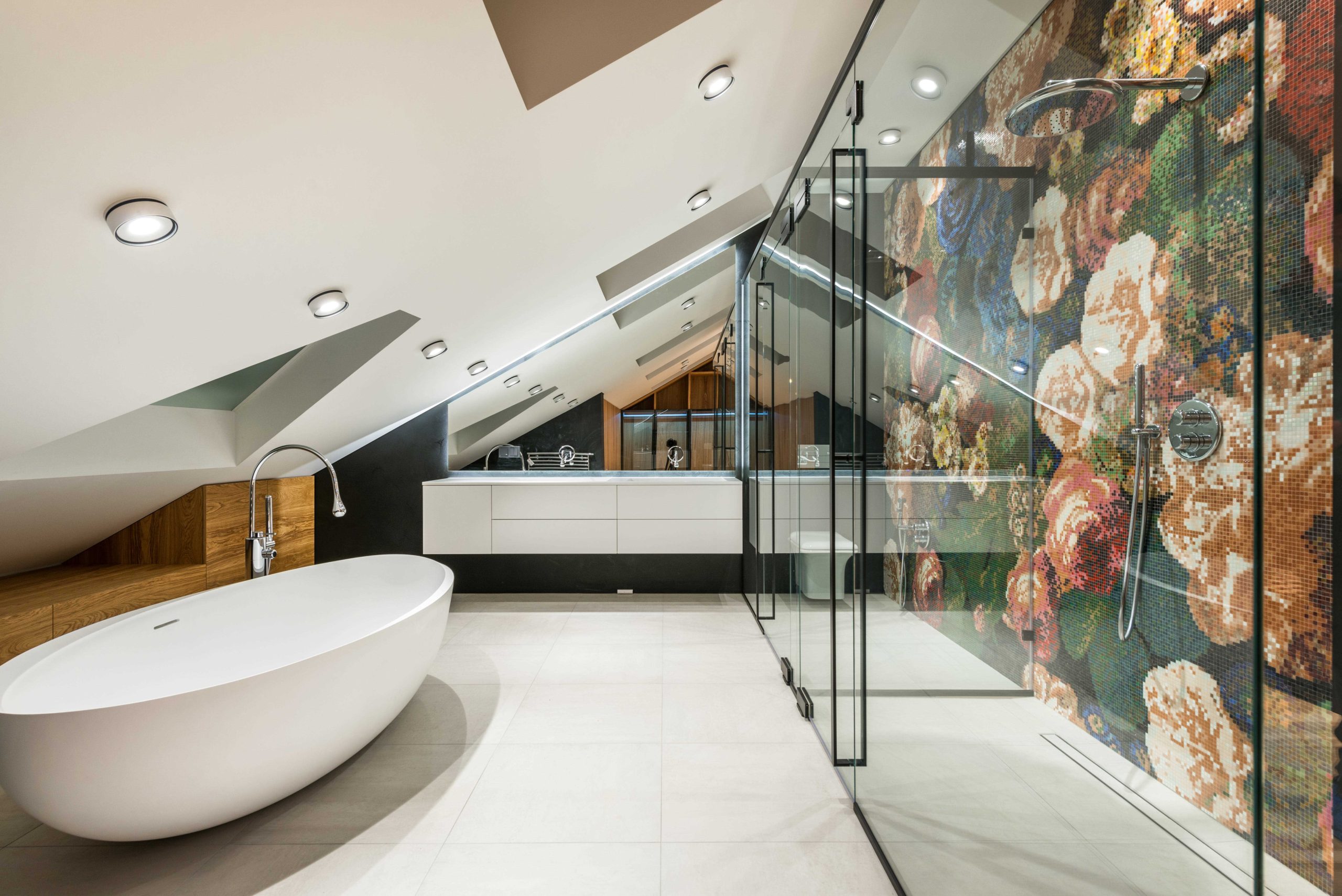
Personalization
In 2024, personalization and customization will be prevalent trends in condo design. Experts encourage creating spaces that reflect your individuality. Incorporate unique elements like personalized art pieces, customized furniture, or one-of-a-kind wallpaper to make your condo truly reflect your style.
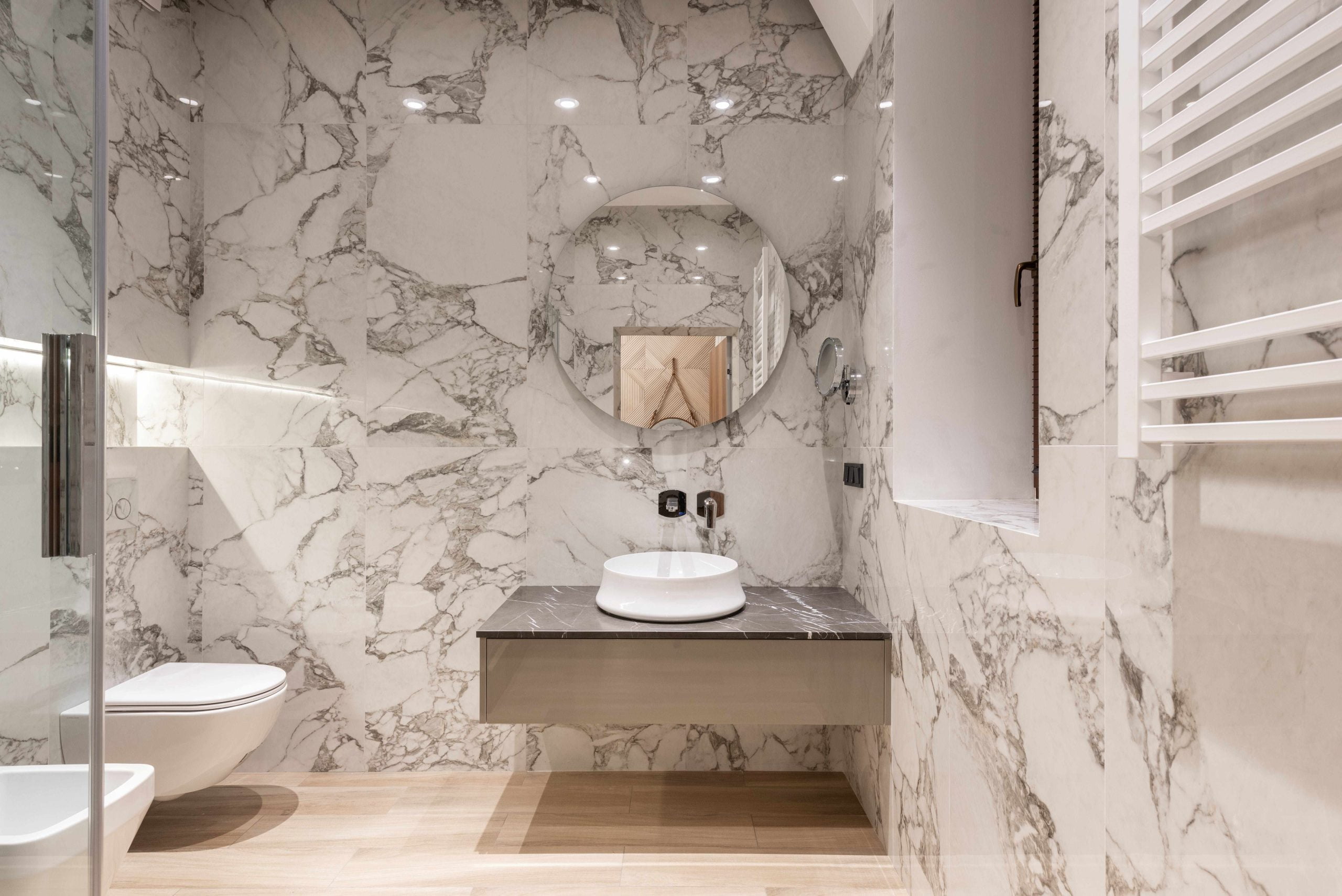
Marble
In 2024, marble is making a comeback, bringing an enduring sense of elegance and luxury. The use of natural stone, including marble and soapstone, adds texture, depth, and sophistication to kitchens and bathrooms. These timeless materials withstand the test of time, ensuring that your interior design remains stylish for years to come.

Multi-Functional Spaces
In condos with limited square footage, multifunctional layouts are essential. Design experts recommend using modular furniture and convertible pieces that can adapt to different needs – for instance, a dining table that doubles as a workspace or a sofa that turns into a bed for guests. Incorporating built-in storage solutions like hidden cabinets or wall-mounted shelving helps keep necessities organized while freeing up floor space.
Which 2024 interior design are you most excited about? Connect with BAZIS on social media (Facebook, Twitter or Instagram) and let us know!
Creative and Inspired Holiday Decorating Ideas: Bring the Festive Magic to Your Home

The holiday season is a time of joy, celebration, and togetherness. One of the best ways to get into the holiday spirit is by decorating your home. From imaginative lighting to nature-inspired elements, there are countless creative and inspired ideas to transform your space into a winter wonderland. So, let’s dive into some enchanting holiday décor options that’ll surely wow your family and friends.

Assess Your Space
Before rushing out to purchase new decorations, take a moment to assess your space and envision how different decorations would complement existing surfaces and structures. Consider garlands for ledges, mantles, and handrails, wreaths for doors and blank walls, and trinkets, candles, and tabletop trees for surfaces. Evaluate any existing décor and store away items that clash with your holiday theme. Dig out your existing decorations, identify any gaps that need filling, and use this as your shopping list for holiday décor this year.

Create a Striking Focal Point
Select a focal point in your home to adorn and create an instant sense of excitement and celebration. This can be a fireplace, a large window, or even a unique sculpture or decorative item. For a classic look, opt for a beautiful Christmas tree that fits your space and vision. There are numerous options available, from pre-lit to plain, frosted, or fir, bushy or slim, and even upside-down trees. If you’re looking to break away from tradition, consider alternative tree ideas. Repurpose a step ladder, arranging it vertically against the wall, and hang decorations on its rungs. Stack books or crates in the shape of a tree, adding lights and ornaments. These unique approaches to a Christmas tree will surely be conversation starters and showcase your creativity.

Have a Festive Front Door
Create a warm welcome for your guests by dressing up your front door with a festive wreath. Decorate your wreath using items that represent the holiday season, such as miniature ornaments, faux berries, or mini gift boxes. Hang a festive doormat that reflects your personal style, and flank the entrance with potted evergreens wrapped in fairy lights. Keeping the front door inviting will set the tone for what awaits your loved ones inside. Pro tip: Do you want to know the secret to creating a custom wreath that looks impressive but is inexpensive? Start off with a basic, store-bought wreath with red bows. Cut the bows off and weave in sprigs of real cedar, holly, and pine to make the garland look fuller and more varied.

Create DIY Ornaments
Add a personal touch to your tree by making your own ornaments. Gather the family and get creative! Use salt dough or air-dry clay to sculpt unique designs. Paint and glitter them in festive colours before adding ribbons or strings for hanging. You can also repurpose old buttons, wood, scrap fabric, or leftover wrapping paper to create charming and eco-friendly decorations. Not only will these handmade ornaments be sentimental, but they’ll also spark conversations and happy memories for years to come.

Set the Mood with Warm Lighting
Lighting plays a crucial role in creating a warm and inviting atmosphere during the holidays. Mix different types of lighting, such as fairy lights, string lights, lanterns, and candles, to add depth and interest to your décor. Use candelabras, curtain lights, or flameless candles strategically in different areas of your home. The right lighting can enhance the overall ambiance and make your space feel cozy and welcoming.

Incorporate Natural Elements
Bring the beauty of nature indoors by incorporating natural elements into your holiday décor. Pinecones, branches, berries, and fresh foliage will all add a touch of beauty and whimsy to your decorations. These rustic and earthy touches can be found right outside your home or through faux alternatives available at stores like Michaels. Using natural elements adds a warm and festive charm to your décor while connecting you with the beauty of nature.

Pay Attention to Detail
To achieve an effortless and cohesive holiday look, pay attention to detail and create balance in your décor. Offset larger or heavier elements with clusters or vignettes of smaller decorations to create a visually appealing display. Include festive functional items like throws, pillows, nutcrackers, or tree-print table runners to add both style and functionality to your décor. These final touches will elevate your overall holiday experience and give your home that wow factor.

With these creative and inspired ideas, you can transform your home into a festive wonderland during the holiday season. By assessing your space, creating focal points, using imaginative lighting, incorporating natural elements, and paying attention to detail, you can create a warm and inviting atmosphere that captures the magic of the holiday season. Let your creativity shine and enjoy the process of bringing joy and cheer to your home. Happy decorating!
What are some of your favourite ways to decorate for the holidays? Connect with BAZIS on social media (Facebook, Twitter or Instagram) and let us know!
The Rise of “Quiet Luxury” in Interior Design
 Images: The Row 2023 Spring Collection (left); HBO’s Succession (top right)
Images: The Row 2023 Spring Collection (left); HBO’s Succession (top right)
In recent years, the term “quiet luxury” has become increasingly popular in the world of fashion – and also interior design. This design trend emphasizes minimalism, simplicity, and elegance over flashy logos or branding. The goal is to create a space that feels refined, sophisticated, and timeless, while also being understated and subtle.
The term “quiet luxury” was first coined by Thomaï Serdari, director of the Fashion and Luxury MBA program at NYU, to describe clothing that is both of the highest quality and understated, with a focus on timelessness and sophistication. The trend has been embraced by brands such as The Row, Bottega Veneta, and Khaite, popularized by the television series Succession, and is now gaining momentum in the interior design world. Think of it as an elevated version of the basics, emphasizing high-quality materials, simple yet sophisticated designs, and a muted colour palette of calming neutrals.

One of the key elements of “quiet luxury” in interior design is the use of high-quality materials. This includes everything from natural stone and wood to plush fabrics and soft leathers. The focus is on quality craftsmanship and attention to detail, rather than branding or any overt show of wealth. The result is a space that feels luxurious and indulgent, without being showy or over-the-top.

Neutral colours are another important aspect of “quiet luxury” in interior design. This includes shades of white, beige, grey, and black, as well as organic neutrals and earthy browns. The idea is to create a space that exudes warmth, and that feels calm and serene, while still being opulent. This can be achieved through the use of textured fabrics, such as linen, silk, and wool, as well as natural materials like stone, metal, and wood.

Clean lines are also an important element of “quiet luxury” in interior design. This includes everything from simple, streamlined furniture to minimalist decor. The focus is on creating a space that feels uncluttered and relaxing. This can be achieved through the use of simple, geometric shapes and clean lines.

One of the benefits of “quiet luxury” in interior design is that it creates a timeless aesthetic. Unlike trends that come and go, “quiet luxury” is about creating a space that will stand the test of time. This design trend emphasizes high-quality materials, simple yet sophisticated designs, and a muted colour palette, which are all elements that have been used in classic design for centuries. By avoiding trends and fads, “quiet luxury” design creates a space that is both elegant and enduring. The emphasis on high-quality materials ensures that the space will age gracefully, while the focus on simplicity and elegance in the design helps to reduce clutter and create a sense of order. Furthermore, the muted colour palette of soft greys, beiges, and whites is timeless and versatile, allowing for easy updates and adaptations to changing styles and tastes.

One of the best things about “quiet luxury” interior design is how it can create a sense of calm and relaxation. In today’s fast-paced and often chaotic world, having a space that feels serene and peaceful can be a much-needed escape. By incorporating natural materials like wood, stone, and linen, the space can feel warm and inviting, while the neutral colour palette creates a soothing atmosphere. Plus, the focus on minimalism and lack of clutter means that there’s less to distract you from enjoying the tranquility of the space.

Finally, quiet luxury in interior design can be accessible to a wide range of budgets. While high-end materials and furnishings can certainly be expensive, the overall aesthetic can be achieved through careful curation and attention to detail. By investing in a few key pieces, such as a high-quality sofa or a beautiful piece of art, you can create a space that feels luxurious, without breaking the bank.

To sum it all up, “quiet luxury” in interior design is a trend that emphasizes minimalism, simplicity, and elegance, without calling attention to itself. By using high-quality materials, neutral colours, and clean lines, you can create a comfortable space that feels refined, sophisticated, and timeless. This aesthetic can create a sense of calm and relaxation, and is accessible to a wide range of budgets. If you’re looking to create a space that feels luxurious and indulgent without being showy or over-the-top, consider incorporating the principles of “quiet luxury” into your interior design.
What do you think of “quiet luxury?” Would you consider incorporating it into your home design? Connect with BAZIS on social media (Facebook, Twitter or Instagram) and let us know!
BAZIS is a real estate development company specializing in developing communities and pre construction condos in Toronto area. We’re committed to excellence in every facet of the commercial and residential real estate development process. Combining visionary architecture, design, marketing and construction with the epitome of corporate integrity and environmental responsibility, BAZIS has become a major force in articulating Toronto’s ever-evolving skyline.
How to Make Décor Look Expensive on a Budget
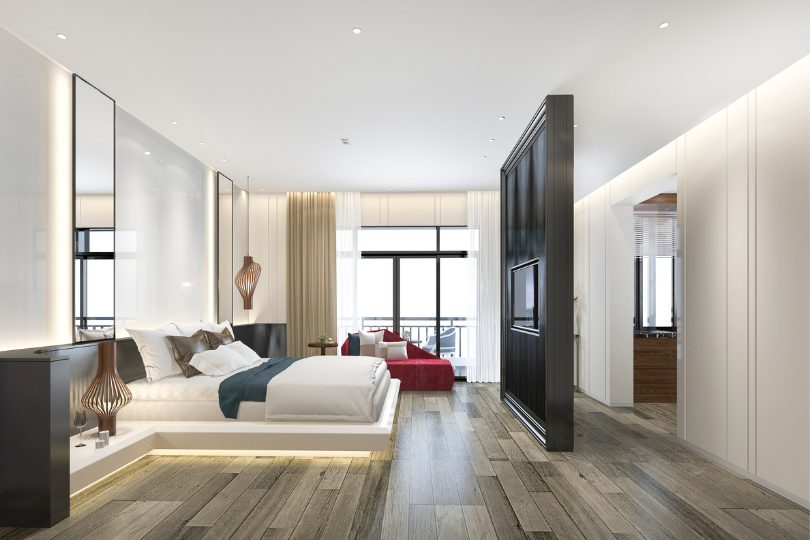
When it comes to making your home decor look stylish and expensive, you don’t necessarily have to spend a lot of money. But you’ll need two things: budgeting basics and creative thinking skills. Sometimes all it takes is patience as you wait for the item you want to come on sale, or as you search flea markets, antiques stores, or online marketplaces to find the perfect item. If you have the means, invest in quality furniture that’s timeless and versatile and that you can use for years to come, such as your sofa and mattress, and then use paint, accents, and repurposed materials to elevate the look of your home.
For our top tips on how to make your home or condo’s décor look expensive on a budget, read on.

Paint
One of the most cost-effective ways to elevate a room and make it look more expensive is by painting it. A fresh coat of paint can completely transform the look and feel of a space. Choosing the right colour can create a sense of luxury, sophistication, and elegance. For example, using a deep, rich shade of navy on the walls can give a room a cozy and upscale feel, while a muted shade of grey can create a calming and serene atmosphere. Additionally, painting trim, doors, and ceilings in a contrasting colour can add depth and interest to a room.

Molding/Wall Trim
Adding molding, wall trim, or architectural details can instantly elevate the look of any room. These elements can add depth, texture, and character to otherwise plain walls, making them feel more luxurious and expensive. Crown molding, for example, can make a room feel taller and more elegant, while wainscoting can add a classic touch to a dining room or hallway. Wall trim can also be used to create focal points or draw attention to certain areas of a room, such as a fireplace or built-in shelves. Whether you opt for simple or ornate designs, adding these details can transform a space and give it a more polished and refined look.
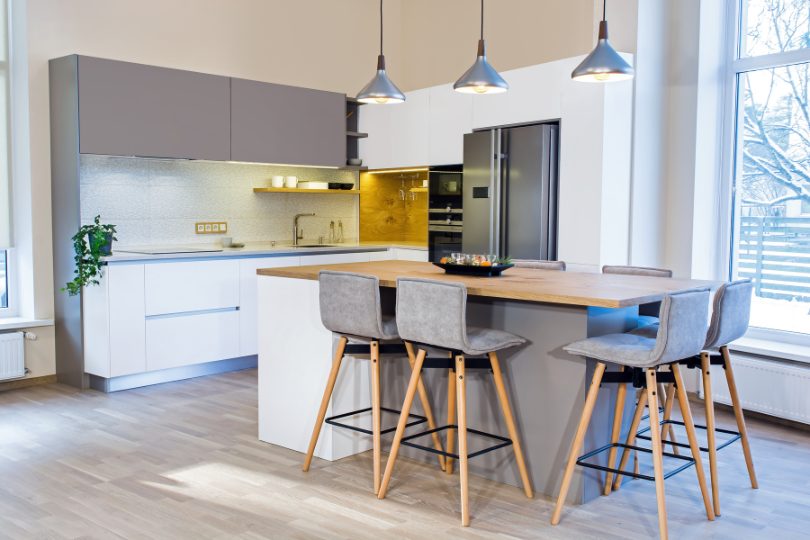
Lighting
Choosing the right lighting can have a significant impact on the look and feel of a room, and it can make it look much more expensive. Lighting is not only functional but can also serve as a stylish decorative element in a room. For example, a beautiful chandelier can instantly add elegance and sophistication to a dining room or living room, while a series of pendant lights can create a modern and stylish vibe in a kitchen or bedroom. Additionally, the use of dimmer switches and accent lighting can create a warm and inviting ambiance, making a room feel cozy and luxurious. Purchasing high-quality lighting fixtures doesn’t have to cost you a fortune. Consider buying secondhand lighting from Facebook Marketplace, Kijiji, or an antique shop. Alternatively, Amazon has some great options. Additionally, adding lampshades with interesting textures or patterns can elevate the look of a basic lamp. By getting creative with shades and adding accents like tassels or fringe, you can create a custom look that appears high-end.

Furniture
Furniture doesn’t need to be expensive to look rich and luxurious. There are many ways to make affordable furniture look high-end and stylish. One way to achieve this is by choosing pieces with clean lines and simple designs. This type of furniture is often associated with modern and minimalist styles, which can create an upscale and sophisticated look. Another way to make inexpensive furniture look expensive is by choosing materials and fabrics that have a luxurious feel, such as wood and leather. These materials add texture and depth to a piece, making it look more expensive than it actually is. Finally, adding decorative elements such as throw pillows, blankets, and rugs can elevate the look of a basic piece of furniture. By layering textures and colours, you can create a custom look that appears high-end.

Repurpose Old Hardware, Frames, and Furniture
Repurposing old hardware, frames, and furniture is a great way to give your home a modern and expensive look without spending a lot of money. One way to achieve this is by updating old hardware, such as door handles and drawer pulls, with a fresh coat of metallic paint or swapping them out with new, trendy designs. This can give old furniture a modern and chic look. Another way to update old hardware is by adding decorative elements, such as crystals or beads, which can add a touch of glamour and luxury. Similarly, old frames can be updated with a fresh coat of paint or by adding decorative details such as metallic or textured accents. Finally, old furniture can be repurposed by reupholstering it with high-quality fabrics such as velvet or leather, or adding decorative elements such as nailhead trim or tufting.

Curtains
Curtains can be a powerful tool in transforming a room from drab to fab. When choosing curtains, it’s important to pay attention to the length and width, as well as the colour and pattern. Hanging curtains from ceiling to floor can create the illusion of higher ceilings and larger windows, while opting for neutral colours or subtle patterns can add a touch of elegance to the space. Don’t forget to add curtain tiebacks or hardware that complements the overall aesthetic of the room.

Art and Plants
If you’re looking to make a room appear more expensive on a budget, incorporating plants and art can be a great way to achieve this. Adding greenery to a space can instantly make it feel more luxurious and fresh. Consider investing in a few statement plants, such as a fiddle leaf fig or a snake plant, and placing them in decorative pots. When it comes to art, you don’t have to break the bank to create an expensive look. Opt for large-scale pieces, such as a striking abstract painting or a vintage poster, and hang them at eye level to create a focal point in the room. Additionally, consider creating a gallery wall with a mix of affordable prints and photographs to add visual interest and depth to the space. By incorporating plants and art in a thoughtful way, you can elevate the look and feel of your room without overspending.

Accents
Incorporating accents is a great way to elevate a room and make it appear more expensive. Metallic accents can be particularly effective in achieving this look, as they add a touch of glamour and sophistication. Consider incorporating metallic accents through decorative objects such as vases, candle holders, or picture frames. You could spray paint items gold or silver. Another way to add interest and texture to a space is through the use of textiles. Invest in luxurious-looking pillows or throws to create a cozy and luxurious feel.

Vintage/Antiques
Using vintage and antique pieces is an excellent way to make a room look expensive on a budget. These pieces can add character, charm, and a sense of history to a space. Consider incorporating antique furniture like a statement chair or a vintage side table, which can be found at thrift stores, garage sales, or even online marketplaces. Vintage rugs, curtains, or artwork can also add a touch of luxury to a room. When it comes to vintage pieces, quality is key, so opt for pieces made from high-quality materials, such as solid wood or marble. Pairing these vintage pieces with modern accents can create an eclectic and sophisticated look.

Declutter
Decluttering, organizing items, and keeping your home clean can make it look more expensive and polished without spending any money. Clutter can make a space feel chaotic and messy, so it’s important to keep surfaces clear and organized. Invest in stylish storage solutions, such as decorative baskets or bookshelves, to keep items out of sight but still easily accessible. When organizing items, consider grouping them by colour or theme to create a cohesive look. Additionally, keeping your home clean and well-maintained can make a huge difference in how expensive it looks. Make sure to dust surfaces regularly, vacuum carpets, and wipe down countertops to keep everything looking fresh and polished. By decluttering, organizing, and keeping your home clean, you can create a luxurious and expensive-looking space without spending any money at all.
What steps have you taken to make your décor look more expensive on a budget? Connect with BAZIS on social media (Facebook, Twitter or Instagram) and let us know!
How to Design an Awesome Kids’ Room in 6 Simple Steps

Designing a kids’ room can be a fun and exciting process, but it can also be a challenging one. You want to create a space that is both functional and appealing to your child’s interests and personality. From selecting the right colour scheme to choosing the perfect furniture and décor, there are many factors to consider when designing a kids’ room. With some careful planning and creativity, you can create a space that your child will love and enjoy for years to come.
To design a room that’s both practical and stylish, follow these simple steps:
#1: Start with a Plan
Before you start purchasing furniture and picking out wallpaper, you need to ask yourself some questions to get a better understanding of the growing needs of your child (or children) and how best to accommodate them.
Question #1: How old is your child?
Kids at different ages have different needs. Are you designing for a baby or a toddler, a child or a teenager?

Question #2: Is the room for one child or multiple children?
Designing a room for one child is pretty straightforward, but if you’re designing for two, you’ll need to consider the dimensions of the space, and try to create separate areas for each child. Will your kids have the option of moving to separate rooms as they grow older? If not, you will need to solutions to future privacy issues.

Question #3: How long are you planning to live in this home?
Are you planning to live in your home short-term or long-term? How long do you need the space to work for your child? Can you make the space work for them when they’re 5 years old and 14 years old?

#2: Design the Room
Once you know the answers to the questions above, you can move forward with designing the room. Make a list of all the furniture you think your child may need. Every home has different needs, but the staples of most kids’ rooms are beds, desks and storage. The easiest way to create a layout is to start with the bed, and then work your way around the room assessing the needs of your child. Be sure to consider the flow of the room; you want it be functional and comfortable. Take into consideration the placement of the door, electrical outlets, windows, closet and nooks. Also, consider the age of your child. Safety is important, especially with younger children. Try to avoid furniture that has sharp edges and find pieces that are sturdy and durable. Once you’ve settled on the furniture you plan to use, measure the pieces and use tape to section off the room in the layout you’ve designed. This will help you visualize the space you have.

#3: Choose the Right Furniture
Bed: When deciding on a bed for your child, there are a couple of things you need to consider: how old is your child, are they sharing a room with their sibling, and how large is the room? Another thing to keep in mind is that kids grow up fast and they need their room to grow with them. If you’re designing for a baby or toddler, you might consider a cot or day bed, but for older children, you might want to purchase a larger bed now that you can customize later to their growing needs. Twin beds are a no-brainer, and are a great option for siblings who share a room, however you might want to consider bunk beds if you’re short on space. You can also consider investing in bunk beds that can later be converted into twin beds. Even if you don’t have the space now, you never know in the future and it’s good to have the option.
When buying a bed for your child, you also need to consider spacing, storage and sleepovers. If the room is small and you can’t accommodate two single beds, trundle beds are a great solution, providing an additional sleeping area that can be used during sleepovers. Loft beds are an excellent option to maximize floor space, and create a nook underneath that can serve as play space or desk area.
In terms of design, the best place to arrange the bed is across the room from the door. This is typically the best place in terms of light, acoustics and comfort. Place the bed down the centre of the room, allowing access on both sides of the bed, or, alternatively, if space is limited, push it against the wall. Just keep in mind that next to the window can be too bright, or hot or cold depending on the season, and ideally you don’t want to keep the bed next to a radiator.

Desk: Once you’ve decided on the mattress, consider getting a desk or table, and place it opposite to the bed. Having a designated workspace where your child can do their homework and study is important for them to focus and stay organized. If your child is younger, consider a play table where they can do arts and crafts or read their favourite books. Choose a desk with ample storage space based on their age. A young child will need space to keep art materials and books whereas an older child may need filing cabinets for their schoolwork and projects. Consider a desk with an upper hutch or drawers on the side for extra storage space.
Place the desk opposite to the bed to create a separate space where your child can focus on their schoolwork. Also, consider placing the desk next to a window as natural light inspires creativity and helps kids to focus and stay energized.

#4: Plan for Chaos
Kids have a lot of stuff and their rooms can get messy fast, but you can help your child stay organized by creating storage spaces for them. Adjustable shelving is a must-have as you can make adjustments as your child grows; what starts off as a place to store toys can later accommodate books, photo albums and other mementos. Make sure the shelving is safely fixed to the wall and that it’s accessible. If it’s too high, it won’t be used. If spacing is limited, build cabinets and floating shelves up the walls but make sure essential items are within reach. A combination of open and closed storage is best. Toys and items that are used often are easy to spot and access while items that are used less often can be stored away and hidden for a cleaner look. Consider transparent drawers for younger children, as well as baskets and bins that can store toys and be moved around easily. Chests are also a good option as they can store larger toys and books for young children but also schoolwork, or clothes, as they get older. If you’re having trouble keeping the clutter to a minimum, invest in hooks, under-the-bed storage crates, book rails and furniture with storage such as armoires and dressers.

#5: Decorate the Room
When it comes to decorating a child’s room, it’s important to strike a balance between functionality and fun. One of the first things to consider is the child’s age and interests, as these will inform the overall theme and colour scheme of the room. If your child is old enough, you can encourage them to participate in the design by asking them their favourite colour or animal and working it into the design. For younger children, playful patterns and bright colours can create a cheerful atmosphere, while older kids may prefer more subtle décor with pops of their favourite hues.

Something to keep in mind is that design trends constantly change, and children grow up fast and develop their own interests and personal taste. You might be tempted to paint your child’s room a bright colour or purchase some funky wallpaper, but often it’s best to keep things simple and neutral. When considering the walls, opt for neutral colours, or wallpaper with a timeless print like soft geometric shapes that works for both a young child and a teenager. Keep in mind that wallpaper is harder to change or remove, so if you have your heart set on a certain print or theme, consider using it only in one section of the room such as the closet or one of the walls, while keeping the rest of the room neutral. The same principle goes for furniture. It’s best to keep the basic items simple and neutral and to brighten up the room with decorations, wall stickers or murals. Add in pops of colour and age-appropriate prints to textiles, artwork, lampshades, rugs, etc.

#6: Create a Special Space for Your Child
Designing a play area for children requires careful consideration of several factors. First and foremost, safety should be the top priority. The play area should be free of hazards such as sharp edges or small parts that can be swallowed. It should also be designed to promote physical activity and imaginative play. Install soft flooring such as foam mats or carpeting to cushion falls. Next, consider the age and interests of your child. Provide a variety of toys and activities that promote imagination, creativity and physical activity. This can include items such as blocks, puzzles, balls and a small climbing structure.

Alternatively, you can create a private nook for your child to escape to for some alone time where they read, relax and unwind. First, choose a cozy corner or space that’s away from distractions and that provides a sense of privacy. Next, select child-friendly furniture such as bean bags or floor cushions, and gather materials such as sheets, blankets, pillows and cushions to create a cozy and comfortable space. Finally, add some fun and personal touches, such as fairy lights or posters, to make the nook feel special and unique to your child. With these simple steps, any parent can create a magical and adventurous space for their child to play and relax in.

Do you have any questions about designing your child’s room? Connect with BAZIS on social media (Facebook, Twitter or Instagram) and let us know!
BAZIS is a real estate development company specializing in developing communities and pre construction condos in Toronto area. We’re committed to excellence in every facet of the commercial and residential real estate development process. Combining visionary architecture, design, marketing and construction with the epitome of corporate integrity and environmental responsibility, BAZIS has become a major force in articulating Toronto’s ever-evolving skyline.
The Top 10 Interior Design and Décor Trends of 2023

Creating a home you love to spend time in is an incredibly valuable pursuit. Since we spend a considerable amount of time at home, it influences our state of mind and well-being quite dramatically – and so cultivating an ambiance that suits the type of life you want to live can greatly enhance your quality of life. Whether you want to create a home that’s calm and Zen-like, a home that’s cozy and nostalgic, or somewhere in between, your personal values and taste are what should drive your interior design and décor choices. That being said, checking out the latest trends in the design world can also be a lot of fun – and whether you love them or hate them, they can help guide your own personal and unique choices for your new home or condo.
2022’s top design trends included maximalism or Grand Millenialism, natural elements, multi-functional spaces, colour, high-tech, and vintage and sustainable accents. Several of these trends are carrying over into 2023, including a move away from minimalism, a penchant for natural elements, and the increasing popularity of vintage items and sustainable design. Read on to learn more about the other trends that are dominating the interior design world this year.

Natural Elements
Incorporating natural materials – including woods, especially pine and warmer wood tones, stone, raw and organic textiles, and plants – into interior will continue to be a huge trend for 2023.
Colour palettes are also expected to reflect natural elements as soft, classic, earthy neutrals continue to dominate. Alongside cozy neutrals, interior design experts say that plums and mustards in more calming and deeper tones are also being added to the mix, carrying with the natural theme while adding more pops of colour – albeit muted, subtle shades. But colours can be earthy and calming – so look beyond the traditional neutrals like beige, brown, greens, and blues to more fun earthy shades.
Texture Everywhere
Building on the natural elements trend, texture will be a big theme for 2023. Natural and textured items tend to go together – think linen bedding, grasscloth wallpaper, natural wood furniture, woven shades, reed panelling, and natural stone in lighting fixtures and nightstands.
Texture will also be big on walls – we’ve seen plaster and limewash exploding in the design world in recent months, and these trends are expected to become more commonplace.

Wallpapered Powder Rooms
The wallpapered powder room is how you create a true “jewel box” in your home. The powder room is such a great place to play and have fun – adding patterns or colours that may be overwhelming in a larger space, but that spark joy and ignite your imagination in the cozy contains of a smaller room. Experiment with layered colours, texture, and unique decorative accessories to add visual interest and an element of surprise.
Personality-Driven Design
After the pandemic, many of us have spent more time at home than ever before – and so we’ve come to embrace the idea that our homes should be cozy and welcoming places. Gone are the days of extreme minimalism, with all-white walls and Pinterest-perfect rooms. Instead, homeowners and interior designers are embracing cozier spaces that feature personal collections, layered textiles, unique art, and a mix of old and new furnishings. It’s all about warmth, depth, and character now.
Vintage and Heirloom Furnishings
Connected with the drive toward personality-driven design is the rising popularity of vintage and heirloom pieces. Items that are vintage, antique, and hand-crafted, and that have been passed down over generations are generally high both in quality and in personal value, as they often have sentimental value and carry with them special memories and family stories. These pieces embrace nostalgia and give a respectful nod to the past. They’re also more sustainable – reuse and recycle is the motto here.

Sustainable Design
Vintage and heirloom pieces are sustainable, which is a big part of their appeal. More and more, consumers are mindful of choosing environmentally-friendly options. We want to know where our home furnishings were made, and how, and with what materials.
The move toward sustainable design can mean choosing antiques or perhaps an investment piece – anything that won’t end up in a landfill in a few years. It’s quality over quantity now, and people want to avoid cheaply-made furniture and passing trends. The name of the game here is selection and discernment – and we love to see it!
Eco-friendly design trends for 2023 also include using local, naturally-sourced materials for furnishings, indoor gardens and large-scale indoor plants, and items that are up-cycled or artisan-produced.
Wellness at Home
Wellness rooms are a major design trend right now, and they’re replacing the home gym as a more holistic, well-rounded option. A wellness room is completely customizable to your preferences and routine. Whether it includes a Peloton, a yoga mat, a meditation nook, a bench press, or a spa station, it’s sure to enhance your quality of life and to give you a special retreat space.

“Soft Modern” Kitchens
People still love modern kitchen designs, but modern kitchens can tend to be overly cold and impersonal. Homeowners who want a modern kitchen that still feels cozy and welcoming are embracing a new trend called “soft modern” kitchen design. According to design professionals, contrast is key here – layering in warm elements to juxtapose the more modern elements. This might mean using a very high-gloss finish for the cabinetry and offsetting it with a matte wood finish for open shelving or accent panels, for example.
This is a trend you’ll see reflected at our Queen Church condominium in downtown Toronto with Tridel.

Lighting as Art
Nothing sets the mood and ambiance in a home like great lighting. In 2023, lighting fixtures are making big statements and are more and more artistic and creative. Lighting is expected to become more sculptural with mixed materials incorporated into the pieces. So consider having more fun with your light fixtures – for example, by experimenting with size, scale, and proportion. Great new lamp shades are also available that use fabrics such as pleated linen and innovative new materials such as ceramic, so you can have more fun than ever with trendy light fixtures and shades.
Sconces and pendant lighting are also on the rise. These types of wall-mounted lights provide soft and beautiful lighting (unlike overhead lights, which can be a bit harsh) while also freeing up surfaces (such as nightstands) for personal or decorative objects – which makes them highly functional, convenient, and space-saving, especially for those who live in condos. These types of lighting can also pack a huge design punch, with many unique statement designs available.
Curvy, Wavy Décor
This trend has been around for a while and it’s not going anywhere just yet. Wavy décor, arches, rounded shapes, and softer, curvy lines are here to stay. This design trend creates spaces that are cozy and organic. Whether it’s an oblong mirror, architectural details, mushroom lighting, or curvy cabinets, credenzas, or nightstands, embrace the wave!
Which 2023 design trends are you most excited about, and do you plan to incorporate any into your home? Connect with BAZIS on social media (Facebook, Twitter or Instagram) and let us know!
